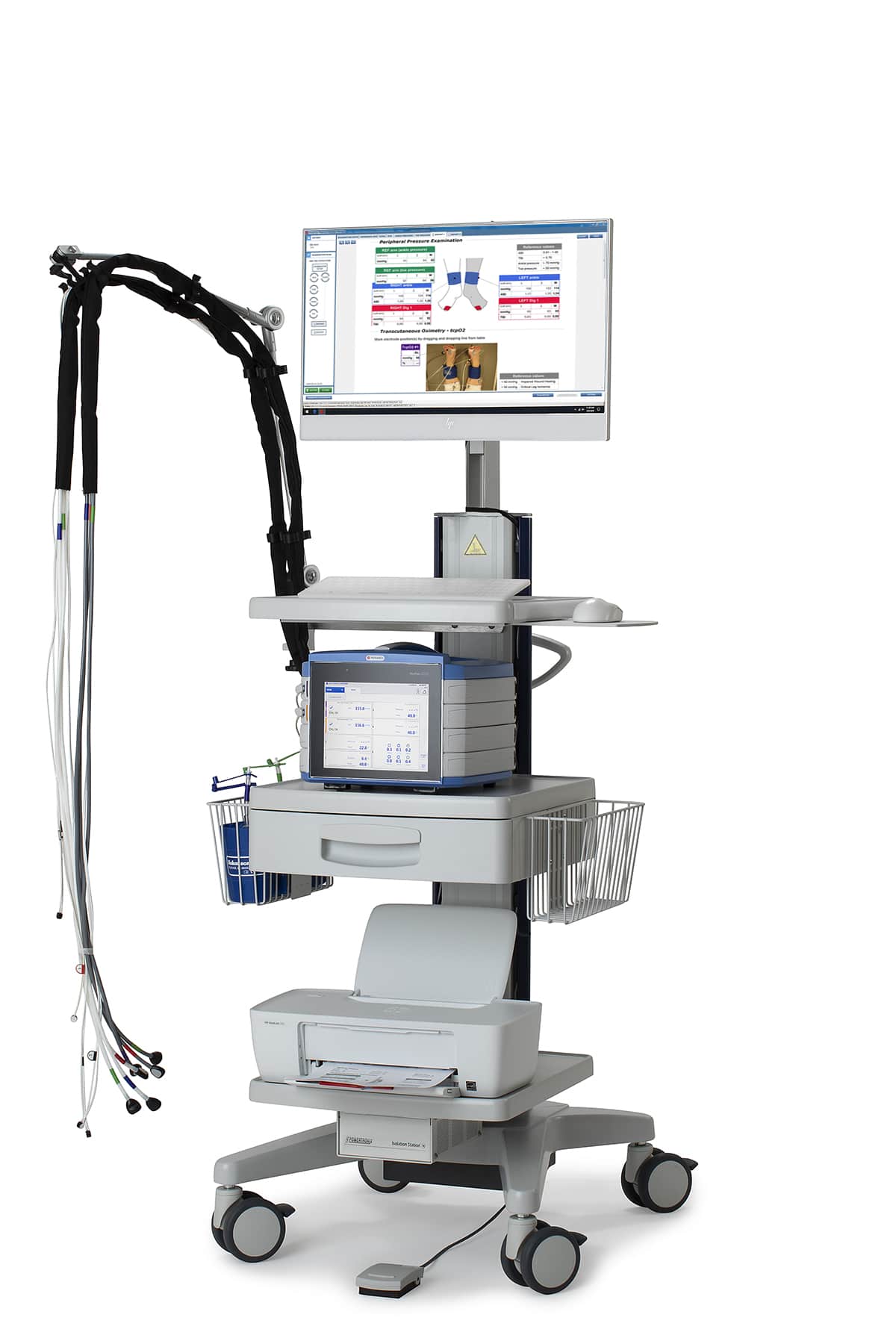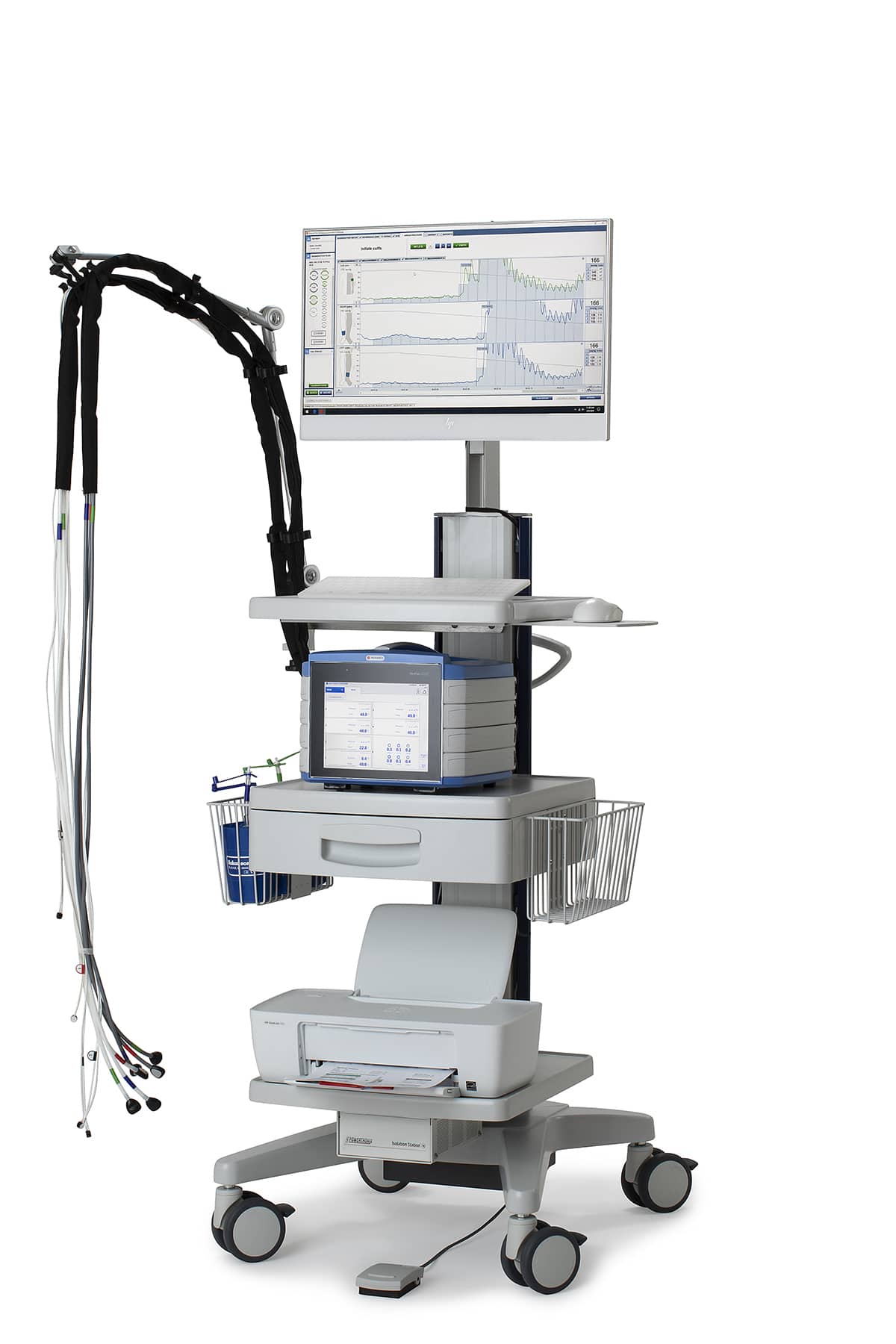Skin Perfusion Pressure (SPP)
![]()
Skin perfusion pressure (SPP) is a non-invasive small vessel screening technique that has been successfully utilized for assessing wound healing potential and determining amputation level. The test has also proven dependable for gauging post-amputation healing, evaluating for CLTI/PAD and the need for further vascular screening. In addition, SPP testing can be valuable for projecting if a patient can bear compression therapy for venous ulcers.[1] There are no side effects of the test.
SPP values reflect the local microcirculatory blood pressure. It is measured by placing and inflating a cuff over the measurement site, then slowly deflating it and registering at what cuff pressure the microcirculatory blood perfusion returns. The blood perfusion is detected using a laser Doppler probe. Similar to the process of systolic pressure measurement, the cuff is inflated to 150-200 mmHg and gradually deflated to allow a slow and detectable return of normal blood flow. The major difference in setup is that the SPP probe is positioned underneath the pressure cuff when taking a reading. Perimed’s *404 laser Doppler probe has a flat head shape for easy insertion between the skin and the cuff.
Unlike Ankle Systolic Pressures, SPP value reliability is independent of the presence of calcified vessels. Pulse Volume Recording (*PVR) is a supplemental test, using the same pressure cuffs, that provides further information about the status of the large vessels for determining severity of vascular disease, if present.
Other advantages of SPP is that the test is not affected by minor to moderate edema. Tests can also be performed on sites with callused or thickened skin.
The sites for evaluation are limited to areas where a pressure cuff can be placed, eliminating trunk and face application. The abilities to lay supine and have complete leg extension are necessary for patients to partake in SPP assessment. This type of vascular testing may be challenging for patients who are not able to perform the required physical demands or have severe contractures. A viable alternative to SPP testing is *Transcutaneous Oximetry.
SPP is available in the PeriFlux 6000 *Pressure System and PeriFlux 6000 *Combined System. The kit includes additional pressure cuffs and examination plans for the Examination Manager software package.
References:
[1] Fife CE. Non-invasive Vascular Testing and the Wound Care Clinic. Today’s Wound Clinic. 4(8), 2010.
Utility of skin perfusion pressure values with the Society for Vascular Surgery Wound, Ischemia, and foot Infection classification system
Tomomi Kimura, MD,a Yoshiko Watanabe, MD, PhD,b Shintaro Tokuoka, MD, PhD,c Fumiaki Nagashima, MD, PhD,d Shogo Ebisudani, MD, PhD,a and Kiichi Inagawa, MD, PhD,a, 2019
Kurashiki and Okayama, Japan
Performance of prognostic markers in the prediction of wound healing or amputation among patients with foot ulcers in diabetes: A systematic review
Rachael O. Forsythe1 | Jan Apelqvist2 | Edward J. Boyko3 | Robert Fitridge4 | Joon Pio Hong5 | Konstantinos Katsanos6 | Joseph L. Mills7 | Sigrid Nikol8 | Jim Reekers9 | Maarit Venermo10 | R. Eugene Zierler11 | Nicolaas C. Schaper12 | Robert J. Hinchliffe13, 2019
Disclaimer: It is possible that the products on the Perimed website may not be cleared for sale in all markets.




